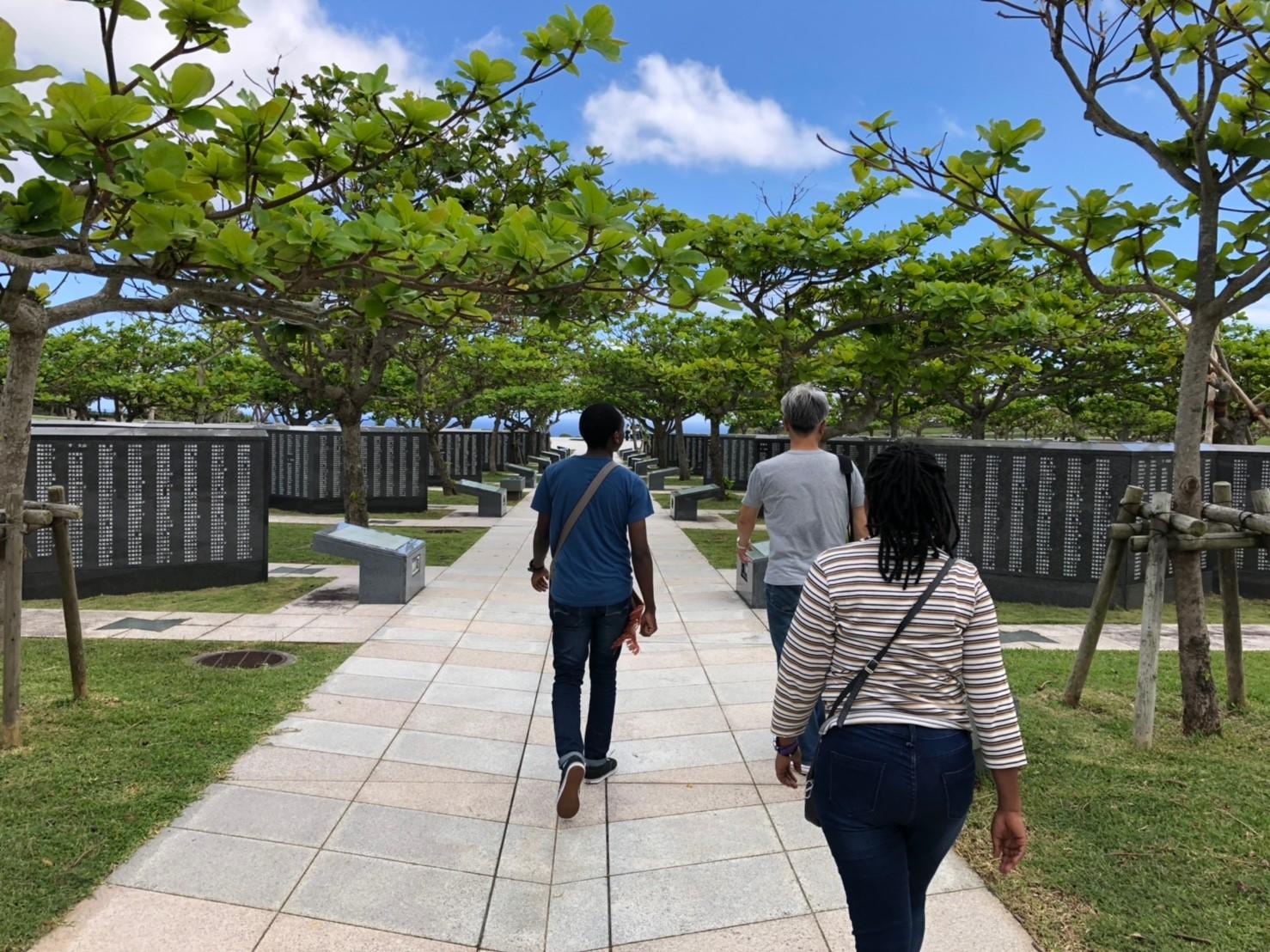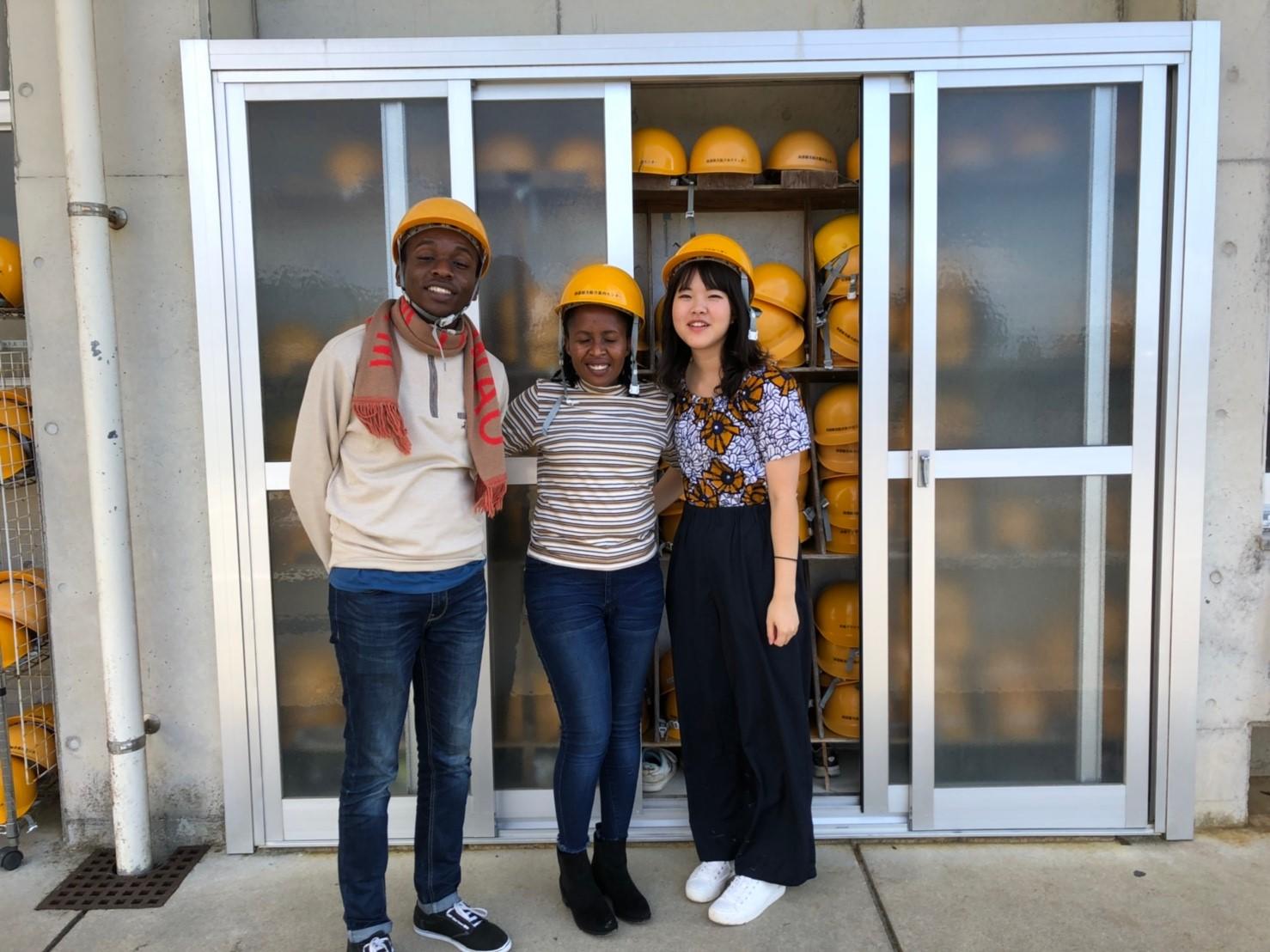
2018年11月5~7日、ロドリグさんとシュクルさんはPIASSでお世話になっている佐々木和之先生に誘われ、沖縄スタディツアーへ行ってきました。平和祈念館や糸数アブチラガマ、米軍基地を訪れたロドリグさん。以下、本人によるレポートになります。

From November 5th to 7th, 2018, I was invited by my professor Kazuyuki Sasaki to take part in a study tour in Okinawa. We were with Shukulu Murekatete and Ayumu Uchida. We visited different places and, I can categorize them in three: peace museums, cave, and U.S. military Bases.
First, we visited two peace museums: Himeyuri Peace Museum and Okinawa Prefectural Peace Memorial Museum. All of them are sharing some features because they show the devastating war in Okinawa. However, each has specific details about the war in Okinawa. For instance, Himeyuri Peace Museum reflects on the story of students and teachers from Okinawa Female Normal School and Okinawa First Girls' High School who died in the war. On the other hand, Okinawa Prefectural Peace Memorial Museum narrates the history of Okinawa in general and put emphasis on the Okinawan war itself. Its amazing feature is the names of Japanese and U.S. soldiers (and other nationalities too) who died in the war. Those names are written on blocks.
Second, we visited a cave at Abuchiragama. It hid many people during the war time. Actually, the cave is natural and it is very huge to the extent that a house of two flows was built inside the cave at the time of the war. The cave was subdivided in different sections: meeting room for the soldiers, place for people who had incurable diseases and who were waiting for their death, place for people with mental diseases due to what they saw upward in the middle of the war, a whole for dead bodies, a room for surgeries and room where ladies who were asked to help as nurse' assistants were taking rest and other different places.
Last, we also visited three different U.S. military bases: the one of Futema, the one of Henoko and the one of Kadena. Surprisingly, even before reaching them, we met a lot of military vehicle circulating inside the cities of Okinawa. It is really strange especially when you have lived in other parts of Japan such as Tokyo where even the Japanese self-defense forces had only sticks and bicycles.
At Futenme, the base is in the middle of the town and it is surrounded by homes, schools, hospitals and other different social institutions. People there told us that its location is not comfortable to people who are living near. The noise of the ospreys disturbs and the fact that they fly over schools and houses is very dangerous. People have been complaining but in vain. At Henoko, we meet people who have been protesting against the military bases for long period. Many of them are old and they are protesting every day. At Kadena U. S. military base, we saw a lot of military airplanes. The base is huge and active: airplanes are flying and landing every time.
As, we came back, a lot of questions have been circulating in my mind: why do the military bases concentrated in Okinawa? Why do Japanese people accept military bases while their constitution, especially article nine, is not supporting the army? I would love to hear the viewpoints of Japanese people about this topic.


